It’s not over until it’s over
At the end of August, Singing Rock guys (sales reps) Martin Jech and Lumír Fajkoš set out to try the 33 pitches Odyssee route in the north face of the Eiger. On the 3rd day they had to retreat but they fought bravely. Martin describes what the route prepared for them...
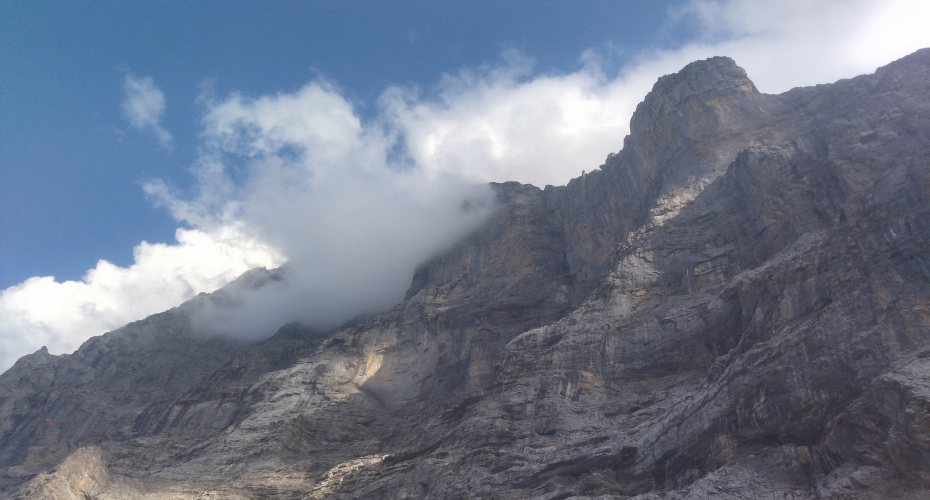
I've been to Rote Fluh on the north face of the Eiger twice in the past, but I've always quit before the key pitch due to cramping in my elbows and pinkies (from pulling haul bags). So it was clear to me that for a successful ascent I would have to find an equal climbing partner and at the same time to be good at tactics on the wall.
Fortunately, I didn't have to go far to find my buddy, I found him in the office. My colleague Lumír Fajkoš, besides his climbing skills, offered a wealth of experience and a sense of weight saving, which seems to be crucial for such climbs (because pulling every extra kilo is noticeable).
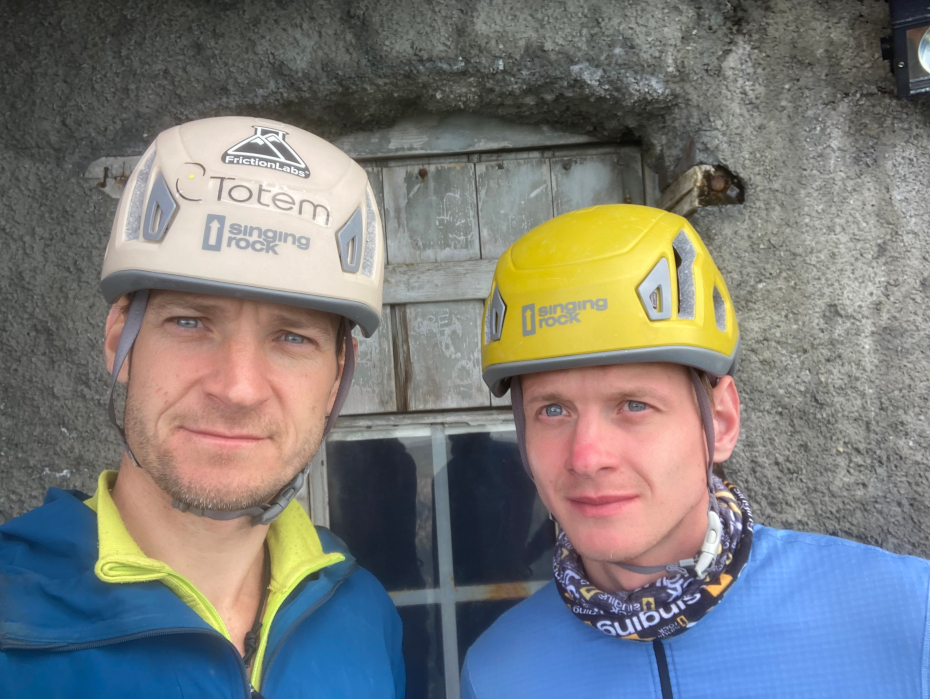
After waiting for good weather, and going through all the travel and initial peripetias, we passed Stollenloch (the door to the railway tunnel in Eiger) early on Sunday morning, August 20, and started to approach to the first climbing pitches of the Odyssee route (8a+, 1400m, 33 pitches). The first pitches went easily thanks to previous experience and after a couple of hours we reached the bottom of the first harder pitch (8th) rated 7c/8a. Here I tactically handed the lead to Lumír, I believe it could fit him. So he does and climbs it OS style, saving me the necessary strength for the next pitches (we work in a team climbing model, where the leader climbs RP/PP style, the second climber moves up arbitrarily).
The next pitch (9th) is also rated 7c/8a, but it feels much more unpleasant, also because of the exposed section in the first third. In the first attempt I miss the correct sequence, I fall and thus climb the pitch on the second attempt. We finally reach the narrow ledge below the key pitch (10th) for 8a+, where the familiar passage ends for me. The key pitch is quite overhanging and offers such extremely exposed ledge climbing with 200 meters of Rote Fluh under my butt so I preferred not to look down.
After couple of attempts and a short break, I send the pitch, much to my delight, and the ominous silence of Eiger's north face was broken by a joyful shout. At that moment I felt that we are going to finish the route. However, this pitch marks transition from sport climbing to alpine climbing (climbing on pitons, wet sections, runouts) begins to prevail.
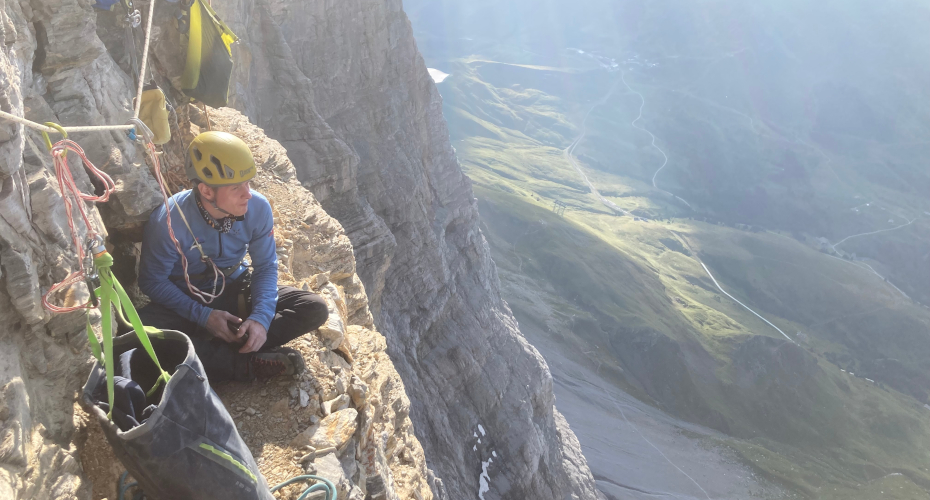
It is 3 o'clock and we have six pitches left to reach the second Czech bivouac (2 of them are easy). Lumír is entering the next pitch (11th) 7b+/c. However, water dripped from the overhangs above, which in the higher passages falls on the climbers and at the same time on belay station, which is completely wet. After a couple of attempts Lumír sends me to the lead, but because of the wet section I also sit down and have to make a 2nd attempt. Unfortunately, my elbows cramp, which means that we will not reach the bivouac today. So we descend to the ledge below the key pitch, where perhaps the most exposed bivouac we have both experienced awaits us. The ledge is just wide enough for one mattress to fit, we each sleep in a different part of the ledge about 5 m apart.
The next day after waking up, we start tactics. Recognizing the enormity of the climb, we decided to split it into four days, swapping leads after each day instead of each pitch. So today I would reach the bivouac and Lumír would have a jumaring "rest" day”, the next day we would switch, and the fourth day would be my turn. A small complication is that we only have water for three days (we're thinking of refilling the bottles in the bivouac with dripping water) and to save weight we have only a smaller chest ascender instead of the hand ascender.
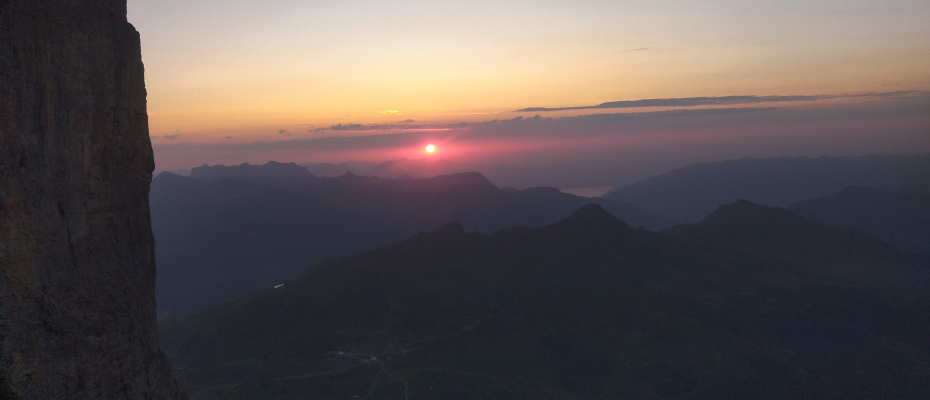
After some warming up with ascenders to pitch 11, which we had left the previous day, I managed to climb it despite the wet rock. The next pitch (12) was adequately protected and rated at 6c+. It involved some crack climbing. However, the rock was wet, shattered, and slanting away from the last protection with sharp edges. I had thoughts of retreating a couple of times but, after careful consideration and suppressing my self-preservation instinct, I reached the belay.
Only one challenging pitch remained (13th) for 7b+/c+. Water continued to drip on us from above, making us suspect that the difficulty rating was linked to moisture levels. I climb the pitch on my second attempt, which takes us out of Rote Fluh, opens a view of the Czech Pillar, and we have three easy pitches to go to the 2nd Czech bivouac, where we finish the day.
After reaching the bivouac, Lumír wants to try the next pitch (17th) rated 7c. Since we are finally on a bigger ledge, he just puts his shoes to the side. However, during the climb, he breaks off a hold that hits the shoe. It rolls and falls into the valley. The ominous silence of the north face is again broken by shouts, but this time by cries of frustration. We consider for a moment how to resolve the situation. We agree that descending the west side is impossible and we will have to rappel. However, given the solid weather and the possibility of sharing shoes, we can afford to continue and rappel down from the summit. So we spend the night in a spacious bivouac and I suggest Lumír to make an improvised shoe from available materials.
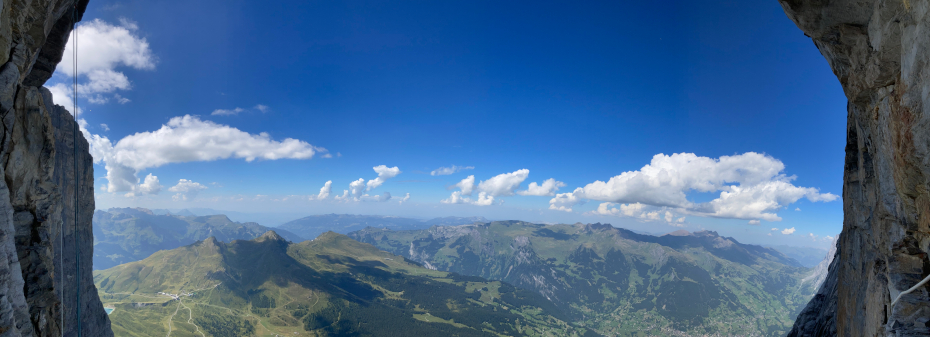
The next morning, on the third day, Lumír completed pitch 17 and I am following him. We're looking at the 18th pitch, which is already haunting from the topo. 35m 7b+, 4 pitons. Only here we get Jacopo Larcher's comment: "Less protection and difficult route finding" make sence. I break the silence and the absent stares with the dismal announcement that I'll give it a try. From the belay station we can see the first piton, then there is a hardly noticeable runout to the traverse to the second piton, the third piton is even further and diagonally. After a while, despite the not difficult climbing terrain, I let myself get caught in the second piton and try to find the necessary morale. I don't find it, partly because the following pitches are supposed to be in a similar style.
After careful consideration of what risks we are willing to accept, we prefer to quit and rappel back to the bivouac ledge and on to Stollenloch, where we flash to stop the train that will take us off this terrifying wall.
We don't take the fact that we didn't climb the route as a loss, but rather as a draw with such a big wall, where there is no room to play heroes. Still, it is a (sufficient) experience for the rest of our lives.
I want to thank Lumír for joining me on this adventure.
Author: Martin Jech
Foto: Martin Jech, Lumír Fajkoš
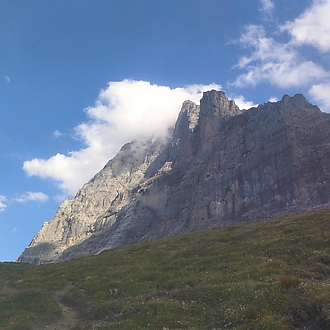
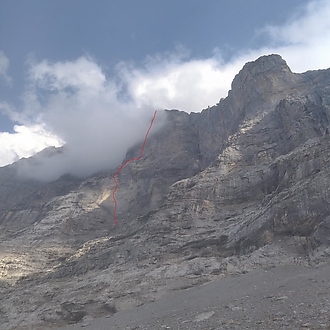
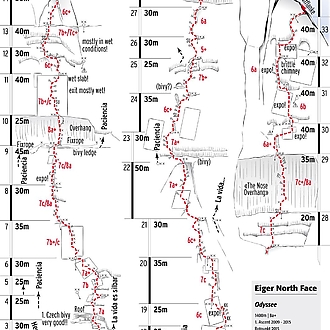
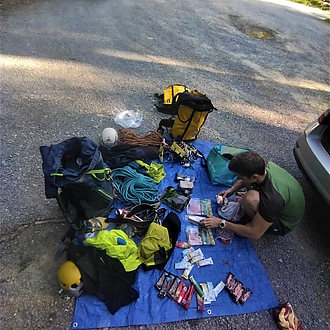
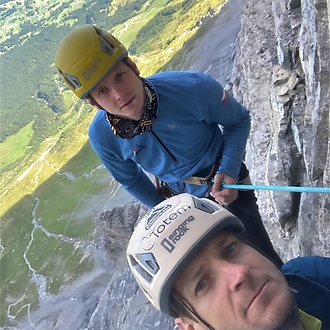
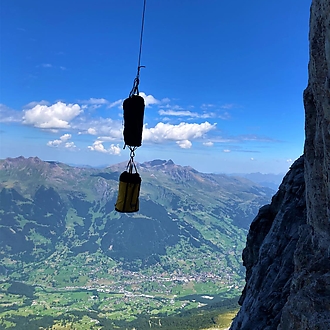
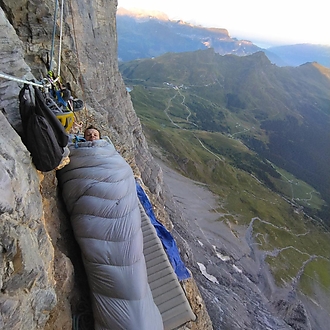
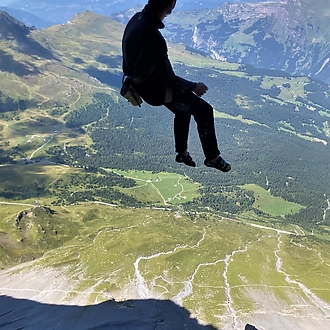 More
More